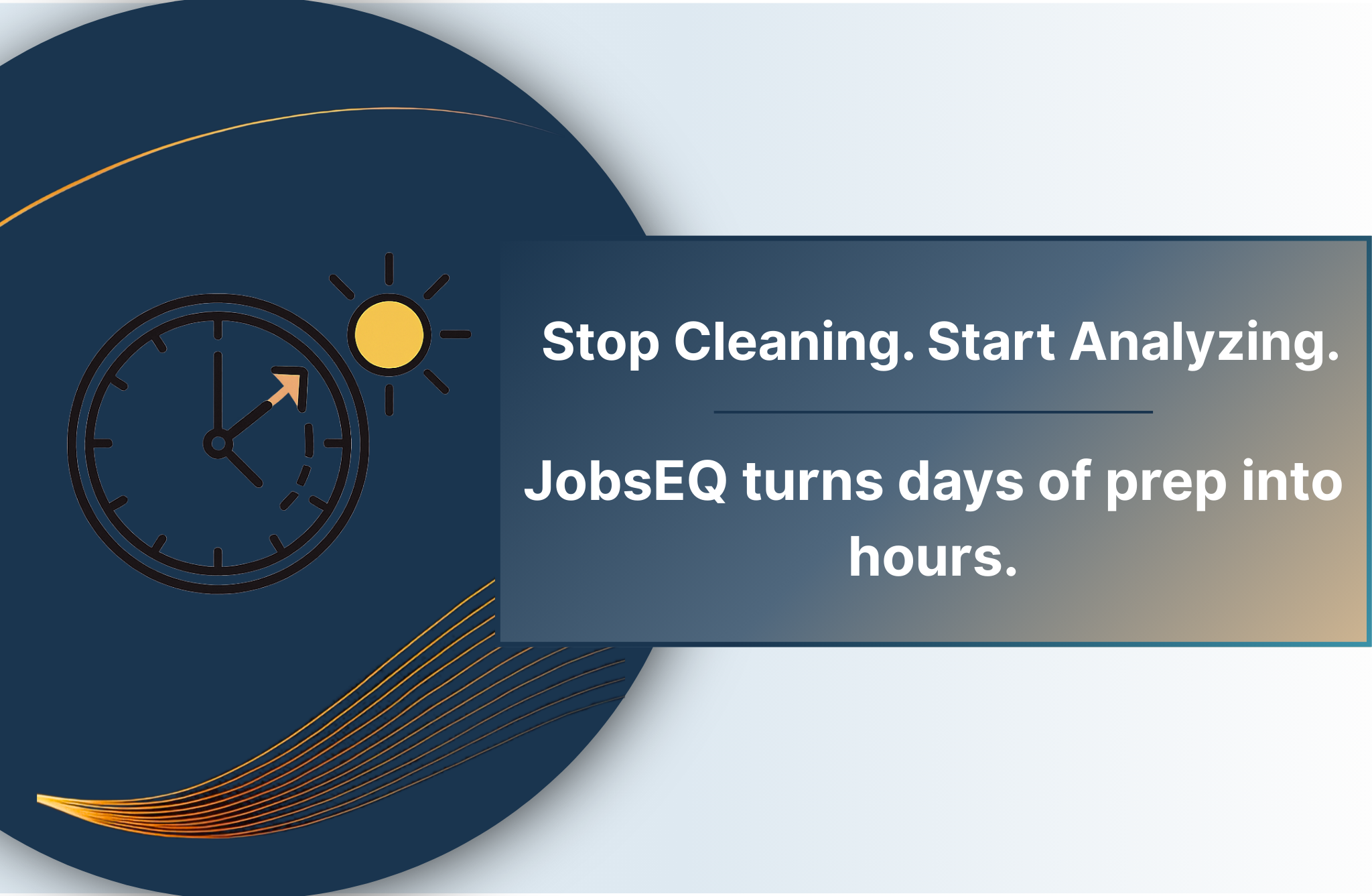How JobsEQ Lets You Spend Time Analyzing, Not Just Gathering, Data

By Patrick Clapp |
The Long Road Without JobsEQ
Several years ago, I was tasked with estimating Science, Technology, Engineering, Math, and Healthcare (STEM-H) employment and job demand for a nine-county region in Wisconsin. Because of the circumstances of the contract, we couldn’t use JobsEQ. Instead, I had to build the analysis from scratch.
That meant:
- Comparing multiple public data sources, including Quarterly Census of Employment and Wages (QCEW), Current Employment Survey (CES), and Occupational Employment and Wage Statistics (OEWS), to see which could provide usable estimates of employment by occupation.
- Downloading and cleaning industry-level employment data for each county.
- Using regional employment shares to allocate occupation data down to the county level.
- Filtering and aggregating those results into a single dataset of STEM-H occupations.[1]
This data preparation work took about a week, before I could even start on the analysis itself.
And even after all that, there were still gaps. Public data sources lacked real-time job postings to show current demand. They didn’t offer forward-looking forecasts adjusted for local economic conditions. And they didn’t provide the convenience of updated employment estimates for the current year. All of that had to be approximated, extending the hours to complete the project even further.
The Short Path With JobsEQ
If I had been able to use JobsEQ, the workflow would have been dramatically simpler. I could have:
- Built a custom nine-county region in just a few minutes.
- Created a custom STEM-H occupation group.
- Run that group in the Occupation Snapshot tool to instantly see current employment, recent job ads, and demand forecasts.
Within the same day, likely within the hour, I would have had a clean, complete dataset ready for analysis.
That’s the difference with JobsEQ: instead of spending days or weeks finding and cleaning data, you can spend that time interpreting it, exploring trends, and crafting actionable insights.
A Note on Details
One of the biggest challenges in that project was simply where the nine-county region fell on the map. In the federal Occupational Employment and Wage Statistics (OEWS) data, those counties weren’t treated as a single region. In fact, the counties crossed four different metropolitan areas, and the majority were lumped into a much larger “nonmetropolitan” areas that also included counties outside our area of interest.
That matters because without JobsEQ, there were no county-level estimates of occupational employment or wages tied to the local industry mix. Instead, we had to start from those broad metro and nonmetro aggregates, then bring in separate industry employment data from QCEW to estimate each county’s share within its larger OEWS region. Only then could we allocate occupations down to the county level and stitch them back together into a nine-county regional picture.
JobsEQ does that work for you. It integrates industry and occupation data to produce county, zip code, and even block-level estimates, even for rural areas, and aligns them with local economic conditions. Without it, we had to spend days just trying to tease out region-specific information from datasets designed for much broader geographies. That’s a big part of what drives up the data preparation time when working from public sources alone.
Better Data, Faster Insights
JobsEQ frees us to do what we do best: analyze data and provide clear, actionable recommendations. The less time we spend wrestling spreadsheets, the more time we can spend helping communities, educators, and businesses make informed decisions. JobsEQ can be a time saver for you as well. Click here for a demo.
Subscribe to the Weekly Economic Update
Subscribe to the Weekly Economic Update and get news delivered straight to your inbox.











